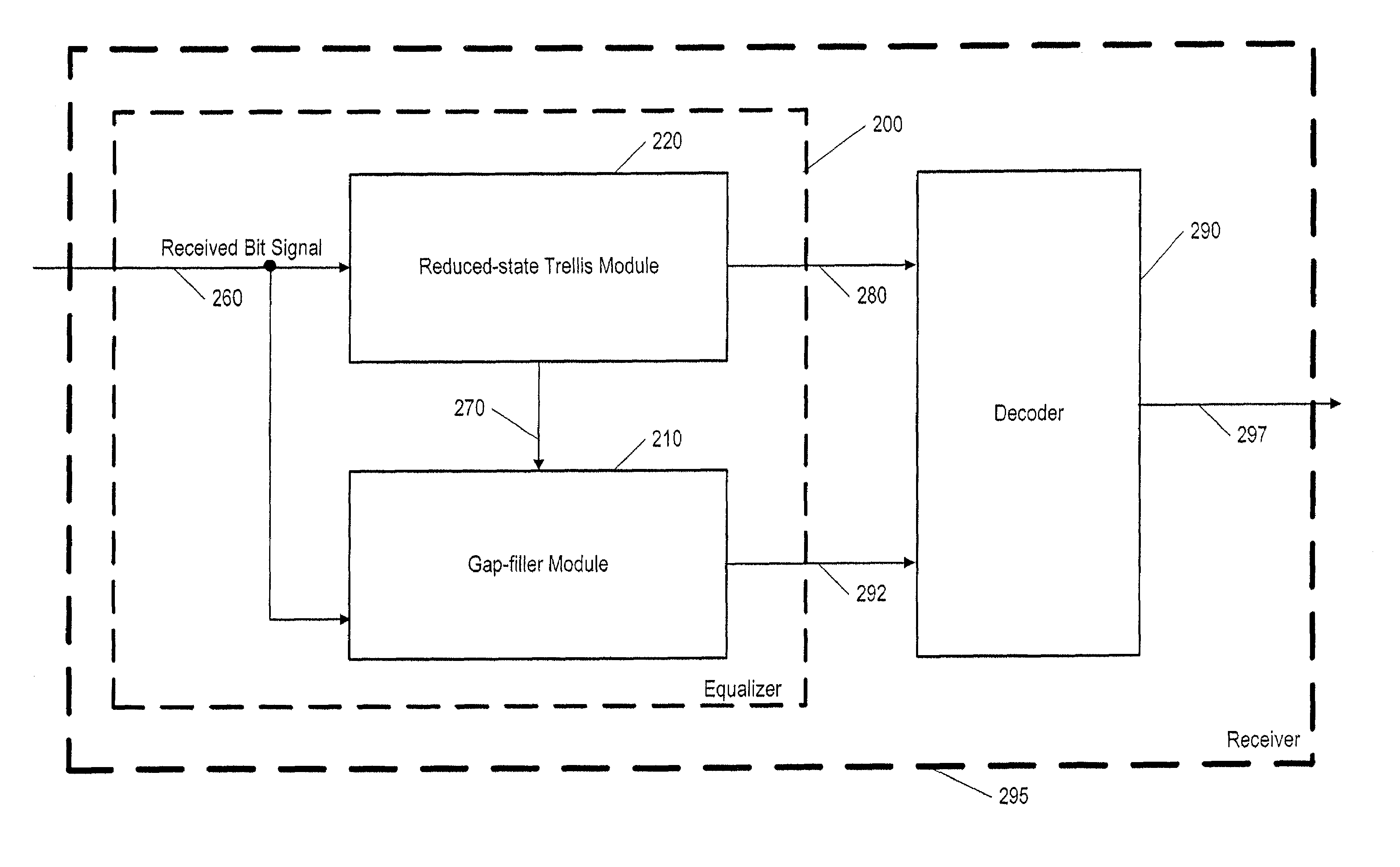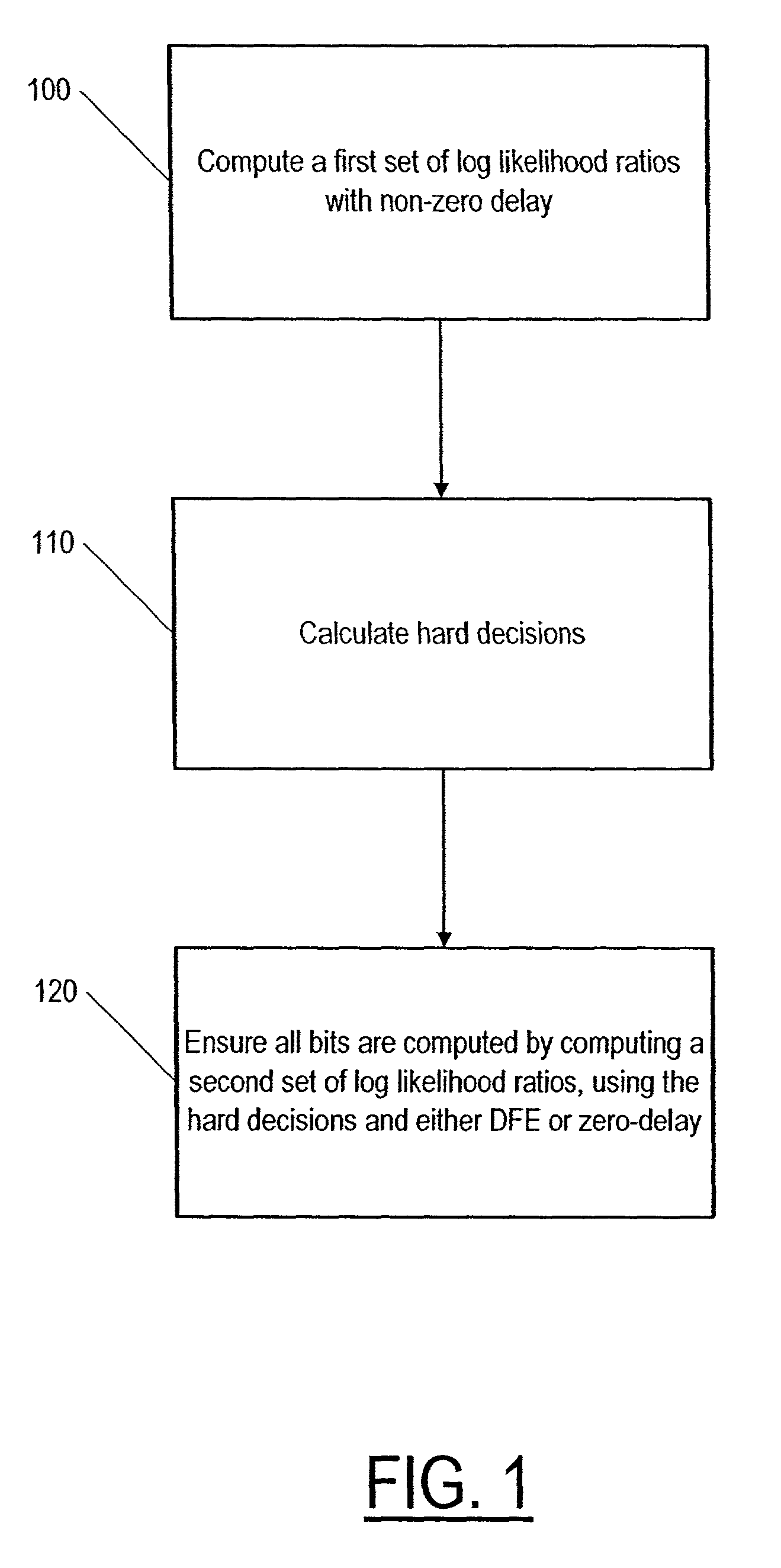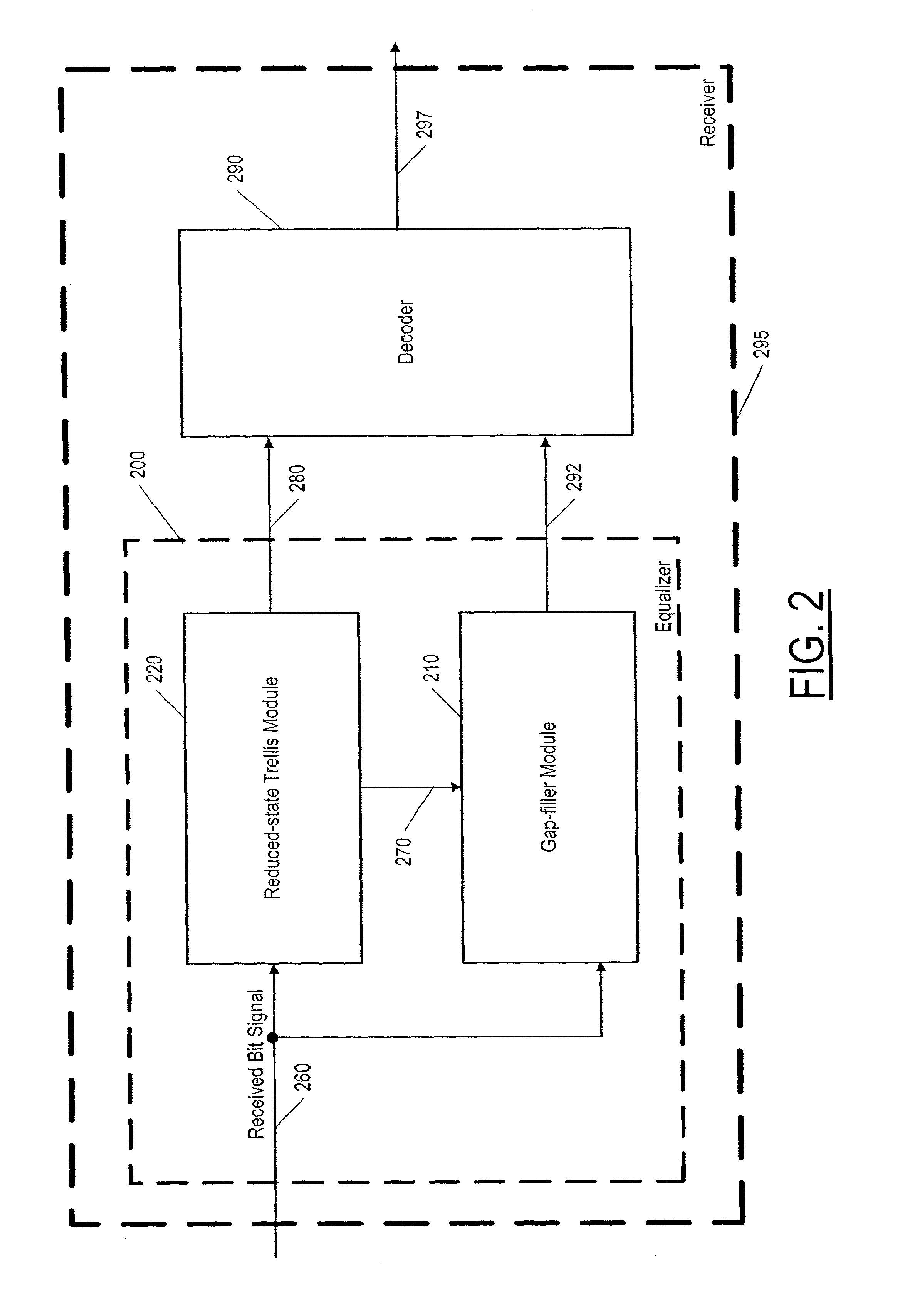Soft bit computation for a reduced state equalizer
a soft bit computation and equalizer technology, applied in the field of digital communication, can solve the problems of inability to perform optimal equalization in edge detection, inability to use dfe to and inability to achieve weak channel coding schemes with poor performance, so as to achieve the effect of reducing implementation complexity and high performan
- Summary
- Abstract
- Description
- Claims
- Application Information
AI Technical Summary
Benefits of technology
Problems solved by technology
Method used
Image
Examples
Embodiment Construction
[0027]General features of a best embodiment of the present method are illustrated by the flow chart of FIG. 1. The method involves computing 100 a first set of soft bits for bits transmitted in a received signal, using a reduced-state trellis with forward recursion and with finite non-zero delay. Alternatively, the computation 100 may advantageously utilize a Viterbi Algorithm, such as a soft output Viterbi algorithm (SOVA). The method also involves calculating 110 hard decisions in response to the received signal, and also ensuring 120 that substantially all soft bits are computed by employing zero-delay soft decision-making or decision-feedback equalization to compute a second set of soft bits. The hard decisions are used to compute the second set.
[0028]Although FIG. 1 depicts a particular sequence for the steps, different sequences can be used in other best mode embodiments. The sequence shown in FIG. 1 is desirable if we want to ensure that the first set of soft bits and the sec...
PUM
 Login to View More
Login to View More Abstract
Description
Claims
Application Information
 Login to View More
Login to View More - R&D
- Intellectual Property
- Life Sciences
- Materials
- Tech Scout
- Unparalleled Data Quality
- Higher Quality Content
- 60% Fewer Hallucinations
Browse by: Latest US Patents, China's latest patents, Technical Efficacy Thesaurus, Application Domain, Technology Topic, Popular Technical Reports.
© 2025 PatSnap. All rights reserved.Legal|Privacy policy|Modern Slavery Act Transparency Statement|Sitemap|About US| Contact US: help@patsnap.com



